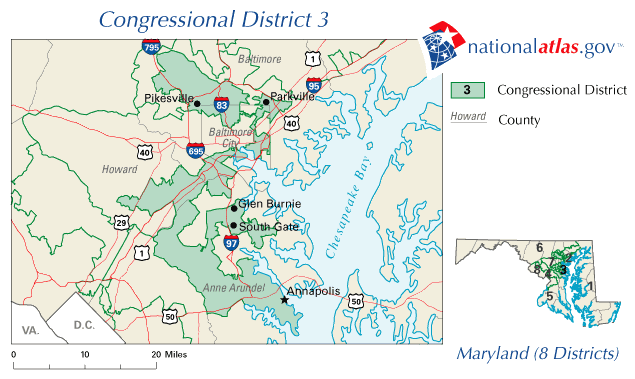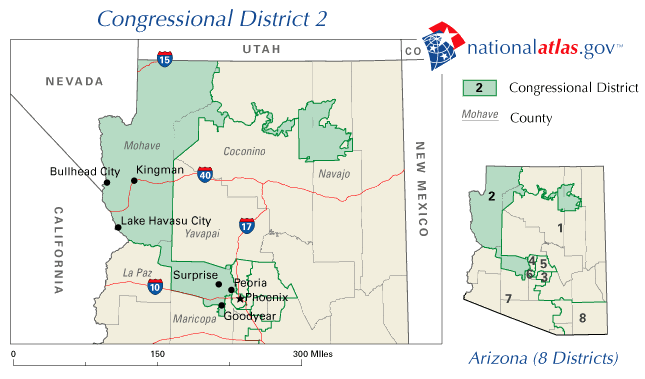Attacking gerrymandering these days is as popular as saying Wall Street needs reform. It’s a truism; everybody agrees with that “gerrymandering is bad,” just as everybody agrees that breathing is good.
Gerrymanders do get pretty ridiculous. Consider Maryland’s 3rd congressional district:

Maryland’s legislature designed this gerrymander to favor Democrats. And it worked: Maryland is represented by seven Democrats and one Republican.
You can probably go search a few terrible gerrymanders of your own; they’re not exactly difficult to find. For the purposes of this post, however, I will be concentrating on one particular gerrymander: Arizona’s 2nd congressional district.
To understand why this is a good gerrymander, see below the fold.
Most observers will probably label this example as just another egregious attempt to favor one party or the other. One look at that incredibly strange-looking right arm certainly adds credence to this theory.
Arizona’s congressional districts, however, are drawn by an independent redistricting committee, not the state legislature. The purpose of this gerrymander is distinctly different from what most casual observers would first presume.
Take a look at Arizona’s Indian reservations:

That brown-colored northeast reservation perfectly matches Arizona’s 2nd district. It’s the Hopi Indian reservation. Completely encircling it is the Navajo Indian reservation, colored in blue.
The Hopi and Navajo tribes have a long history of conflict and land disputes. Having both tribes represented by one congressman would be inappropriate; Arizona’s Independent Redistricting Commission therefore gerrymandered its districts to separate the tribes.
The lesson here is not that gerrymandering is good, but that it can be used for good. 99% of gerrymanders are probably bad; the practice badly needs reform. But we ought be wary when labeling anything as universally negative, lest we forget the other 1%.
–Inoljt, http://thepolitikalblog.wordpr…
